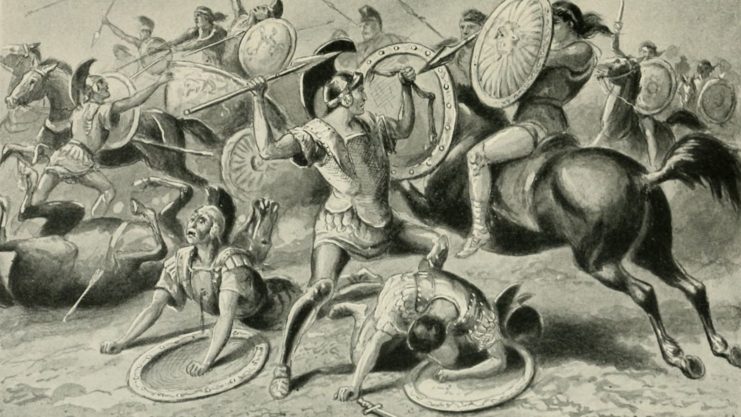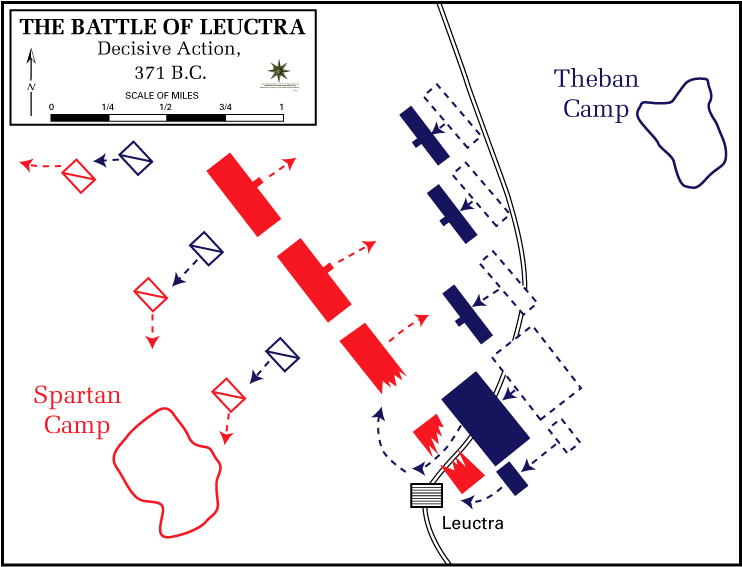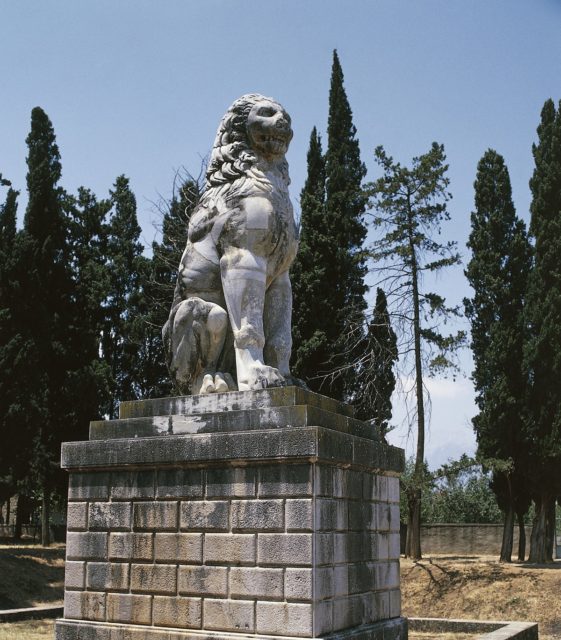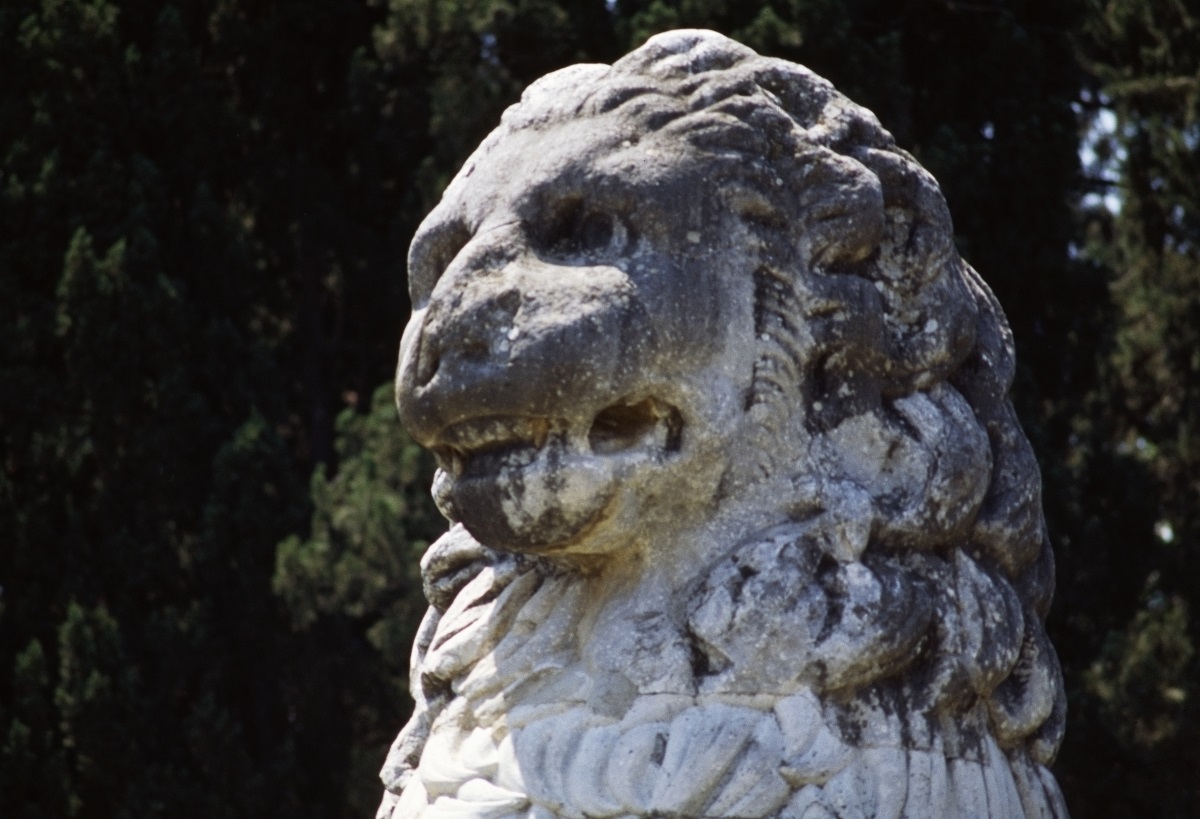The ancient Greek city of Thebes was surprisingly relaxed about gay relationships, even catching the attention of famous Greek philosopher Plato, who noted that opinions on the matter in his city of Athens were complicated. A unit of Theban troops named the Sacred Band were established to protect the city and were comprised solely of male couples. This elite unit actually defeated the revered Spartans in battle, but unlike the Spartans, the Sacred Band has mostly been forgotten by history.
Little is known about the Sacred Band and only a few accounts detail their exploits. Most historians today generally agree that the unit was likely formed around 379 to 378 BC. However, a number of prominent Greek historians mention a 300-strong group of Theban troops that were trained to an elite level well before this date.
None of these references use the name Sacred Band, but this similar group may be a precursor to that unit.
The Sacred Band

As mentioned, the unit was made up entirely of male lovers, to a total of 300 (leading them to sometimes be called the Theban “gay 300”). They were likely hand-picked by Theban military leader Gorgidas for their abilities rather than their social class. Each couple had a dominant older lover and a younger more passive lover.
This force received extensive training, making them one of the most elite forces around at the time. They were based in Cadmea, Thebes’ citadel.
Under the leadership of Gorgidas, the Sacred Band was placed at the front edge of an attack. Later, Pelopidas, a Theban general, came to command the group, where he tasked them with dispatching the enemy’s best troops.
They were used in the Boatian War, which saw Thebes, assisted by Athens, battle Sparta.

The Spartan King Agesilaus II brought a large Spartan army into the Theban territory, which was defended by both Theban and Athenian troops. However, they were outnumbered by Spartan forces and eventually lost control of Thebes’ outer defenses.
The Theban forces refused to retreat and organized their ranks to face Agesilaus’ forces, with the Sacred Band positioned at the front.
Agesilaus ordered his entire force to advance towards the Theban and Athenian troops in the hopes that they would flee at the sight. But the defenders actually lowered their weapons and shields in confident defiance, causing Agesilaus himself to call off the attack.
Later, the unit was involved in the Battle of Tegyra in 375 BC. The Sacred Band stumbled across Spartan forces returning from the Greek region of Locris and were outnumbered two to one. With an almost assured victory, the Spartan troops moved in on the smaller unit but were quickly dealt a vicious blow when the Sacred Band immediately killed the Spartan leaders. The Spartan troops were further alarmed upon realizing that this was no ordinary unit, but one that was equally skilled.
A portion of the Sacred Band performed a flanking maneuverer and a bloodbath ensued, resulting in a large number of Spartan casualties. This shock defeat established the Sacred Unit as a deadly force.
Over the next few decades, the Sacred Band earned a reputation for being seemingly invincible, however, they would finally taste defeat at the Battle of Chaeronea in 338 BC. This defeat came at the hands of Philip II of Macedon and his son, Alexander the Great.
Theban and Athenian allies faced off against the Macedonian forces but were simply no match, with most of them fleeing for their lives. But for the Sacred Band, surrender was not an option. They fought hard until all 300 were dead, ending the mythical unit for good. Their courage and eventual death impressed their enemy, who buried them with honor.
Why aren’t the Sacred Band well known?

The Sacred Band has mostly been overlooked throughout history, but Thebes, in general, is not as widely discussed as states like Athens and Sparta. This is not for a lack of heroic or interesting actions, but because of a lack of well-known
historians and surviving records. In addition, Thebes was rather unpopular among other Greek states after it allied with the Persians at the Battle of Thermopylae.
This meant popular historians and philosophers such as Plato and Xenophon, both from Athens, were particularly biased against Thebes in their writings. The Sacred Band was a victim of this, being heavily derided for their failings, while their successes were glossed over.
In addition, it is believed that underlying homophobia at the time and throughout history has led to the actions of the elite Theban unit being downplayed or completely ignored. Plato explained that the Theban emphasis on gay relationships was because they were poor at seduction, unlike Athenians, who perceived themselves as more sophisticated.
Military leader, philosopher, and historian Xenophon was more direct in his contempt for Thebes. He was especially loyal to the Spartans, having trained with them and received gifts from them. He believed the Spartans were model troops, while the Thebans embraced male couples because of cowardice. This logic was based on the idea Theban couples would stop each other from running away from the battle.
Meanwhile, Xenophon downplayed gay relationships among Spartan troops, explaining that they may fall in love but do not engage in sexual contact. Today, there is plenty of evidence to suggest this is untrue.
Because of these inherent biases in the works most relied upon to understand ancient history, the incredible record of the Sacred Band has mostly been forgotten.
